If your living room’s been feeling a little “meh” lately, you’re not alone. We all get used to our spaces — the furniture, the wall color, that old rug you keep meaning to replace but somehow never do. Over time, what used to feel cozy just starts feeling… flat.
But here’s the good news: you don’t need to gut the room or spend thousands to breathe life back into it. Sometimes, a few thoughtful tweaks completely change the vibe.
I’ve made most of these changes myself — usually one small thing at a time — and it’s wild how different the room feels after even the simplest updates. So here are 10 living room upgrades that are surprisingly doable, satisfying, and kind of addictive once you start.
1. Layer Your Lighting
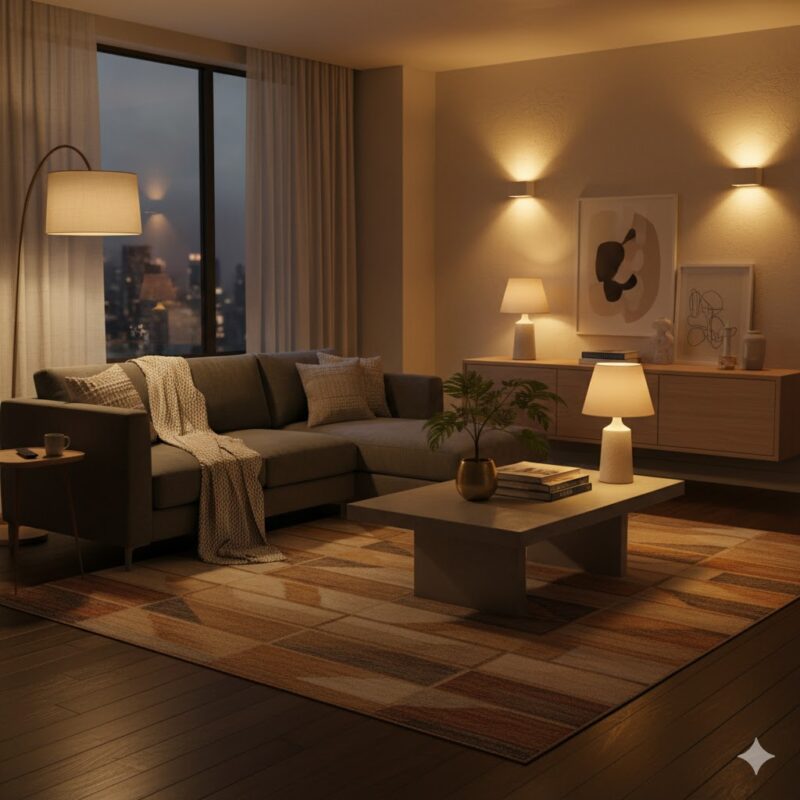
Let’s start with something people overlook constantly: lighting. Most living rooms rely on one sad overhead bulb that makes everything look flat and cold. The fix? Layers.
Think ambient, task, and accent lighting. Combine a floor lamp in the corner, a soft-glow table lamp beside the sofa, and maybe a wall sconce or two. Each light adds dimension and warmth.
I switched from white bulbs to warm-toned LEDs last year, and I swear the room felt instantly more “expensive.” It’s subtle but powerful.
And if you want to get fancy, use smart bulbs. That way you can dim, warm, or color-shift the light depending on the time of day (or your mood, honestly).
2. Add Texture Everywhere
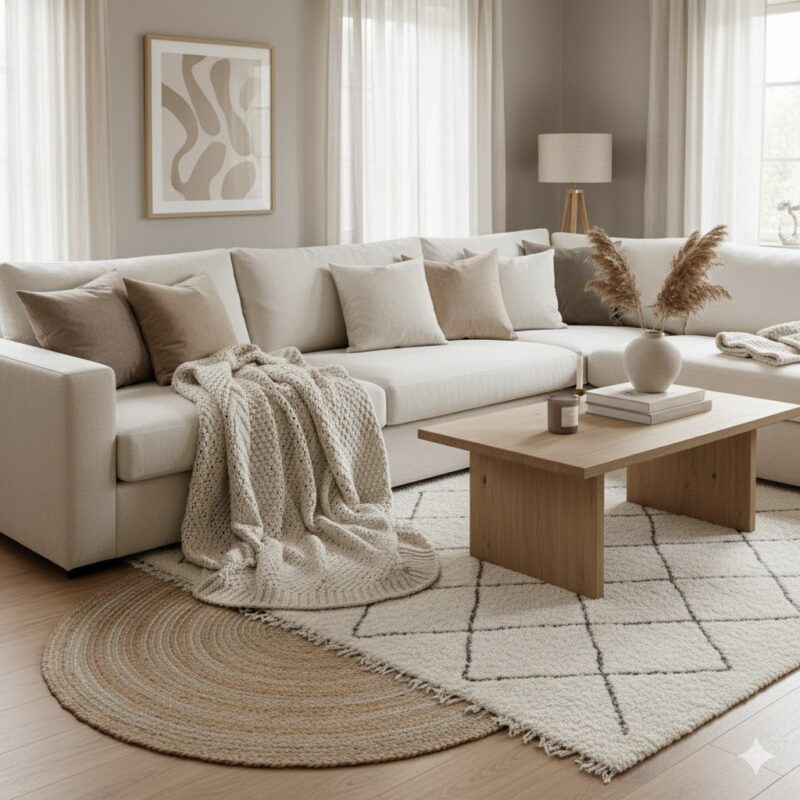
Flat surfaces make a room look sterile. Texture makes it feel lived-in.
Layering is the trick — throw blankets, rugs, cushions, even wall art with tactile materials. Mix smooth with rough, soft with structured. A chunky knit blanket over a linen sofa. A jute rug under a sleek coffee table.
The contrast makes everything richer and more interesting.
And here’s the best part: it doesn’t have to match perfectly. Real homes look best when things feel slightly collected over time — not straight out of a showroom.
3. Upgrade Your Curtains (and Hang Them Right)
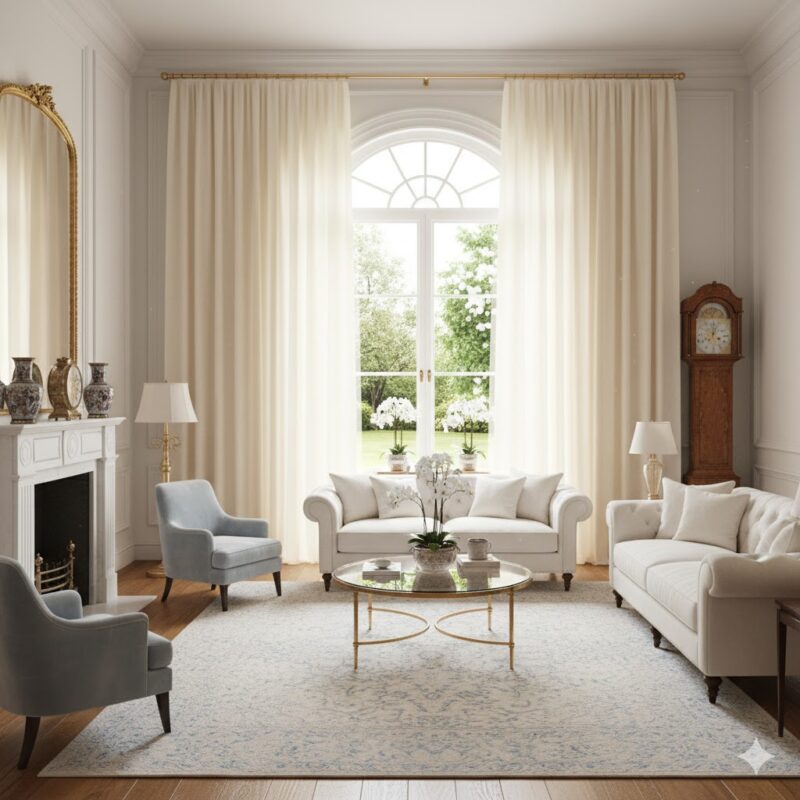
Curtains are sneaky. You don’t notice them until you fix them — then you wonder why you waited so long.
A lot of people hang curtains too low or too narrow, which makes windows look smaller. The trick? Hang them higher and wider. Mount the rod a few inches below the ceiling line, and extend it several inches beyond the window frame.
It gives the illusion of taller ceilings and larger windows — no renovation required.
Swap short, stiff curtains for something soft and full-length. Even simple linen panels transform the whole feel of a room.
4. Switch Out Your Rug (Seriously)
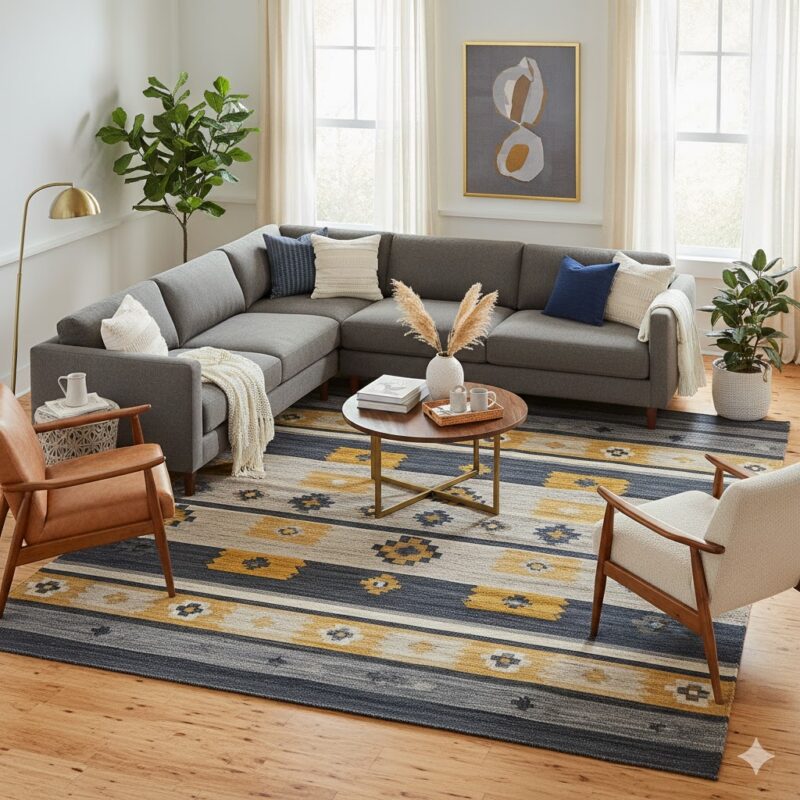
Rugs are like the anchor of the room. The wrong size can throw everything off — and most people go too small.
Here’s the general rule: at least the front legs of your sofa and chairs should sit on the rug. A tiny rug floating in the middle of the floor just looks lost.
Try a larger neutral base or a patterned rug to ground the space. I went from a faded 5×7 to an 8×10 last winter, and the whole room suddenly felt pulled together — cozier, intentional, more “done.”
5. Add Greenery (Even If You Kill Plants)
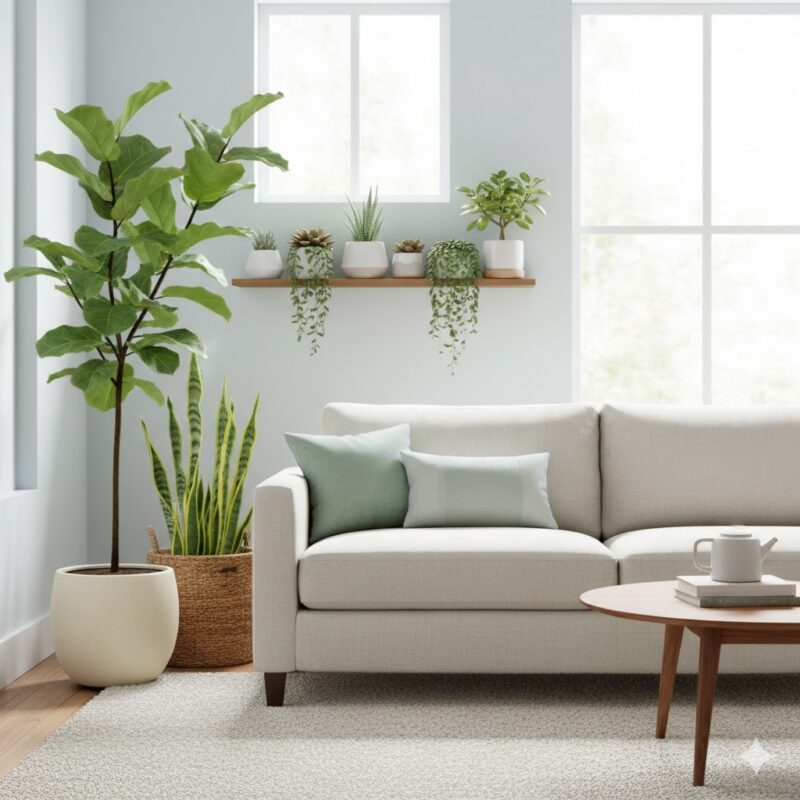
Plants are like instant happiness. They soften hard lines, add life, and purify the air a little (or at least make it feel fresher).
If you’re bad with plants, start with snake plants, pothos, or peace lilies — they forgive neglect. Or go faux; there are some ridiculously good fake plants these days that even plant people have to touch twice to believe.
Cluster plants in odd numbers, vary their heights, and use interesting pots. It’s one of the cheapest upgrades you can do that makes the biggest impact.
6. Rearrange (Before You Replace)
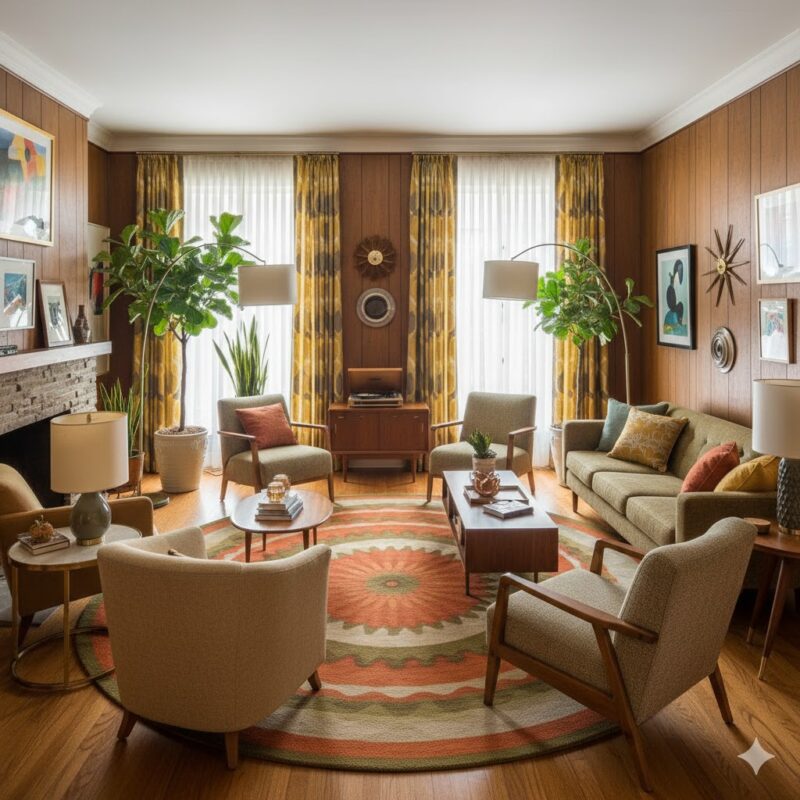
Sometimes you don’t need new furniture — just a new layout.
Play around with positioning. Pull your sofa away from the wall. Angle a chair toward a window. Move the coffee table so there’s space to walk naturally through the room.
Try creating “zones”: one for conversation, one for reading, maybe a corner for work. It sounds obvious, but spatial flow changes everything.
And bonus — rearranging costs nothing. Sometimes you’ll rediscover how good your furniture actually looks when it’s not squished in the wrong corner.
7. Refresh Your Coffee Table
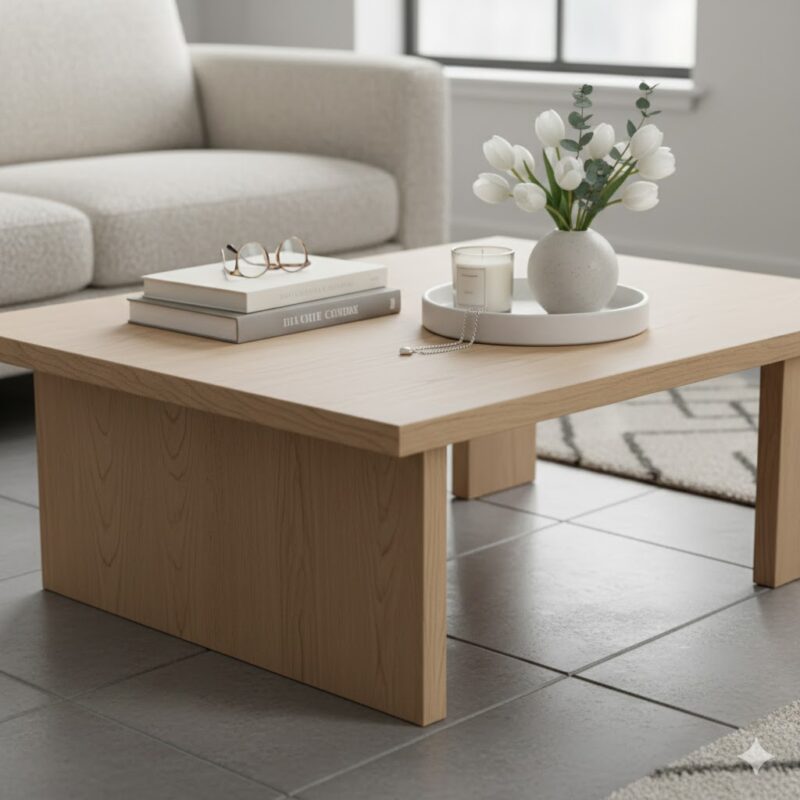
A coffee table isn’t just a surface for remotes and takeout containers (though, yeah, we’ve all been there). It’s a visual centerpiece.
Try styling it with intention: a tray for small items, a couple of books with interesting covers, maybe a candle and a small vase. Group items in threes or fives — it looks more natural than perfect symmetry.
You don’t have to spend much. Sometimes just swapping in a different tray or table runner refreshes the entire look.
8. Upgrade Your Art (Or Just How You Display It)
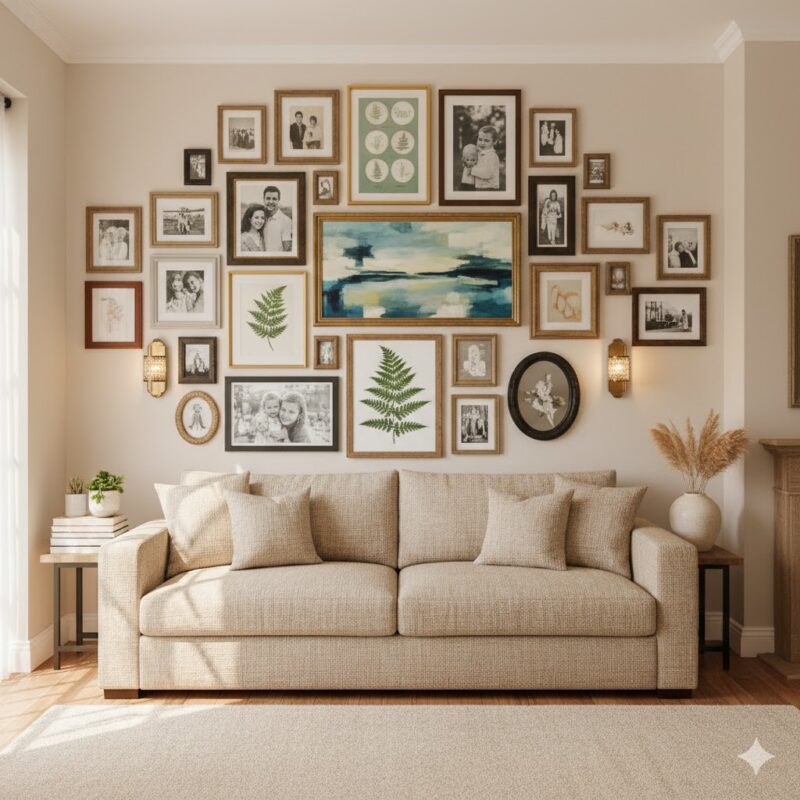
Art doesn’t have to be expensive — it just has to feel like you.
Mix personal photos, prints, and even fabric swatches or old postcards. The goal isn’t perfection; it’s personality.
Play with scale, too. A large piece can make a bold statement, but a gallery wall of small frames adds warmth. Just keep a bit of visual balance — and hang pieces at eye level (you’d be surprised how often people hang art too high).
One underrated trick? Swap frames for uniformity — it ties mismatched art together beautifully.
9. Swap Out Throw Pillows (and Maybe the Covers)
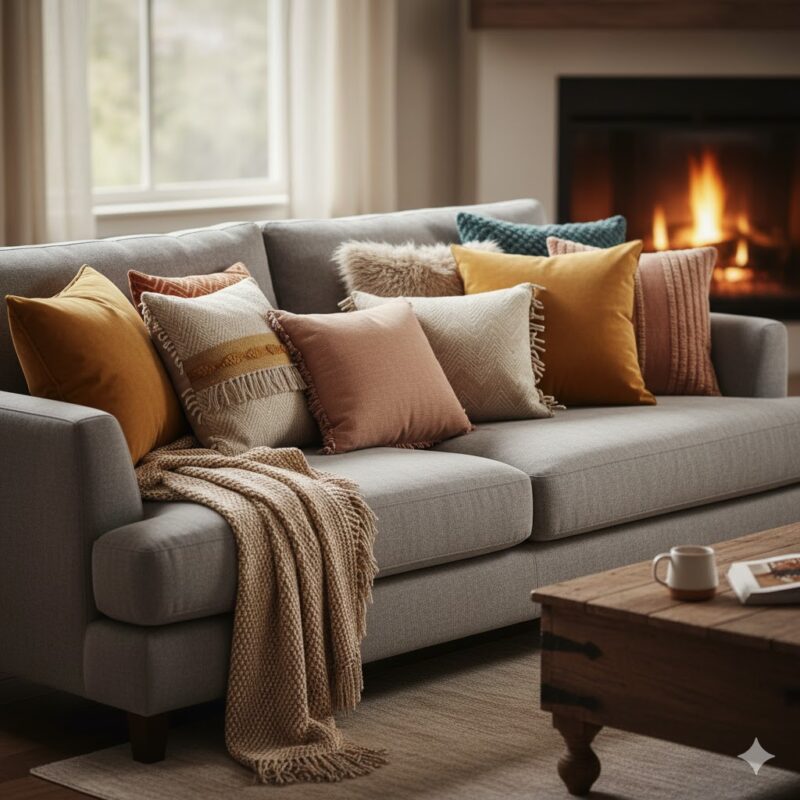
It’s the simplest refresh in the book: new pillows.
Try mixing colors and fabrics — velvet, cotton, linen — with one or two patterns to keep things interesting. Swap covers seasonally if you want to switch up the vibe without buying new inserts.
I used to stick to matching sets, but honestly, mismatched ones look far more natural. The goal isn’t coordination; it’s comfort.
10. Add Scent — The Invisible Upgrade
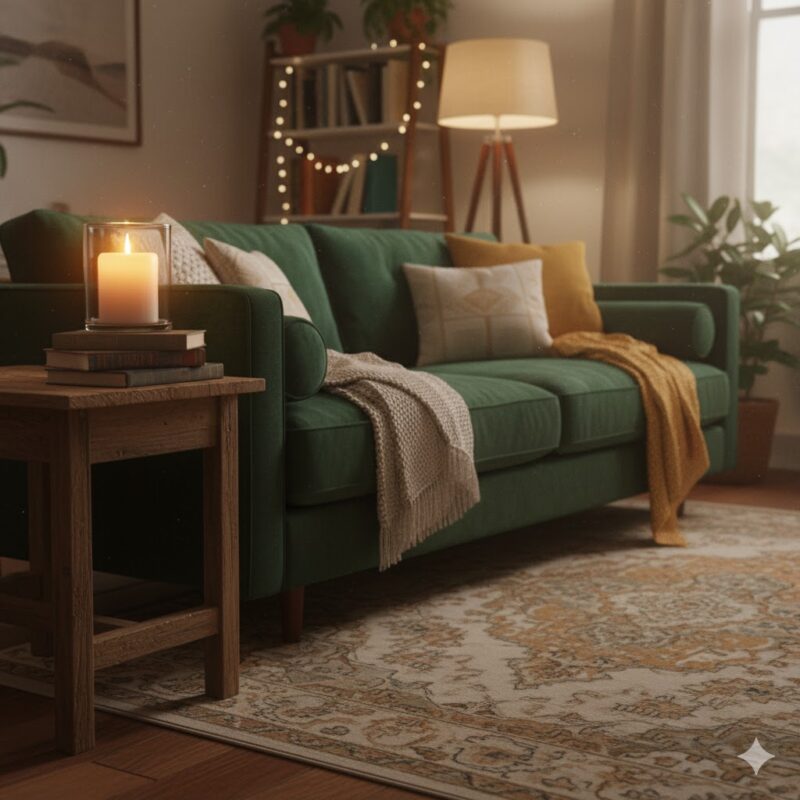
You might not see this upgrade, but you’ll feel it. Scent changes everything about how a room feels — more than you’d expect.
Candles, diffusers, or even fresh eucalyptus in a vase can subtly shift the whole mood. Go with light, natural scents — citrus in the day, wood or amber at night.
Your brain ties smell to emotion. So when your living room smells calm, cozy, or fresh, it feels that way too.
A Quick Recap
You don’t need a renovation or a designer budget. You just need a few thoughtful upgrades that make your living room feel more intentional, more “you.”
Start small — maybe the lighting or the curtains. Then build from there. The changes stack up fast, and before long, you’ll walk in and think, Wait, when did my house start looking this nice?
Because sometimes it’s not about having more stuff. It’s about finally making the stuff you already own work better together.